10 Best Instructional Strategies You Can Apply For The Best Learning Experience
Learn ten research-backed instructional strategies for adult learning. Enhance retention and drive measurable business results.
Learn ten research-backed instructional strategies for adult learning. Enhance retention and drive measurable business results.

According to the World Economic Forum, 60% of employees will require significant reskilling or upskilling by 2030.
This number is a clear wake-up call for any organization delivering training.
To stay competitive, you can’t rely on passive “sit-and-listen” training sessions anymore. You need to design programs that make learning stick.
That’s where instructional strategies come in.
They are the deliberate, evidence-based methods that ensure training content is not only delivered but also actively absorbed, retained, and applied on the job.
In this blog, we'll share these instructional strategies in detail. Some of the strategies can be implemented immediately (within a week) to boost learner engagement and training outcomes.
Let's get started!
Instructional strategies refer to the plans, methods, and techniques that educators or trainers use to facilitate the learning process. Their core purpose is to actively engage learners in the content, fostering a deeper and practical understanding of the subject.
These strategies are a combination of high-level teaching methods and specific activities that together form the framework for structuring and executing a course or training program.

For example, trainers often select from broad categories, such as direct, indirect, interactive, and experiential methods. They then employ specific techniques such as role-play or a case study to execute that plan.
In a professional environment, instructional strategies help your employees build practical competency and improve their performance. Ultimately, the goal is to help learners achieve their professional milestones while empowering them to become self-directed, strategic thinkers.
Adult learners thrive on relevance, flexibility, and engagement. Therefore, instructional strategies for your training program must be a combination of methods and techniques that honor their experience and self-direction.
Here are 10 proven instructional strategies that you can apply this week. These are some effective teaching methods for adults that lead to successful outcomes.
The more immersed an individual is in the learning process, the greater their ability to retain the skills and lessons learned. Active learning is a hands-on approach that requires learners to engage in their education through critical thinking, discussions, and real-world applications.
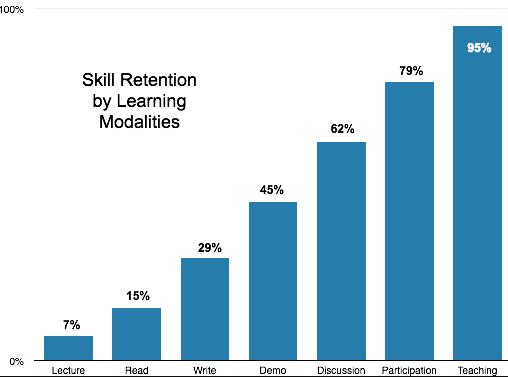
This method provides participants with multiple avenues for learning and processing new information. It also creates a sense of community where people share insights and leverage the collective knowledge and experience of the group.
Scenario-Based Learning (SBL) is a powerful active learning strategy that immerses individuals in authentic, real-world work situations. Learners apply their existing knowledge and critical thinking to solve complex, job-relevant problems.
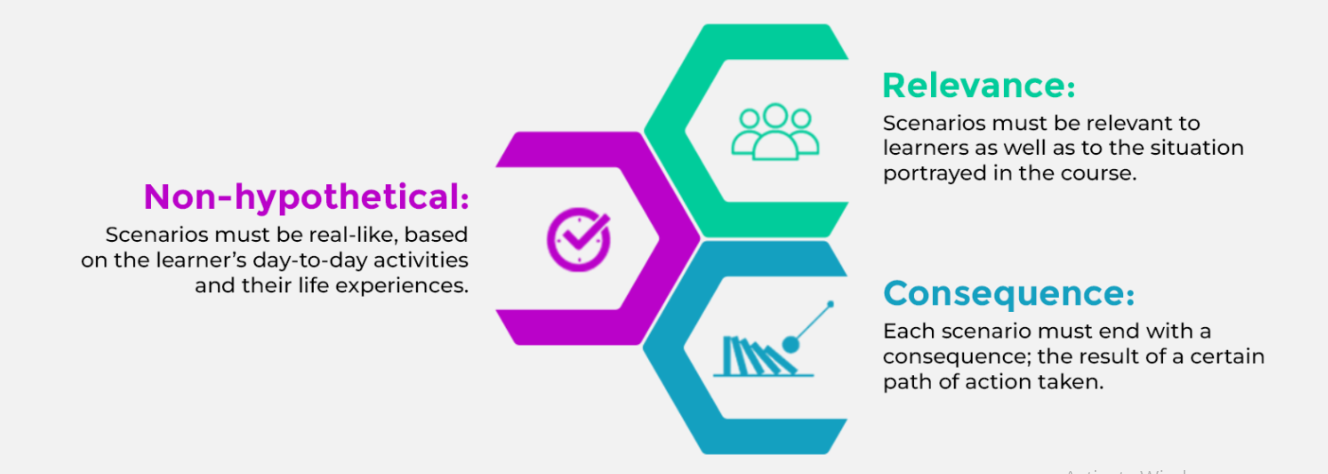
This strategy helps them to translate theoretical knowledge directly into on-the-job capability. Research indicates that SBL has a positive impact on the core competencies of learners, including teamwork, collaboration, and ethical decision-making.
Collaborative learning is the art of grouping two or more individuals to solve problems, generate insights, and achieve a common goal. It involves people in joint intellectual endeavors through active participation, discussion, and the sharing of professional experiences.

Stats show that a company's collaboration index increases sales by 27% and improves customer satisfaction ratings by 41%. This highlights that collaborative learning not only broadens a learner's perspective but is also highly beneficial and profitable for your organization.
With a busy workforce and shrinking attention spans, microlearning emerges as a highly effective adult learning strategy. Instead of long lectures or multi-hour courses, provide your employees with digestible and bite-sized learning content.
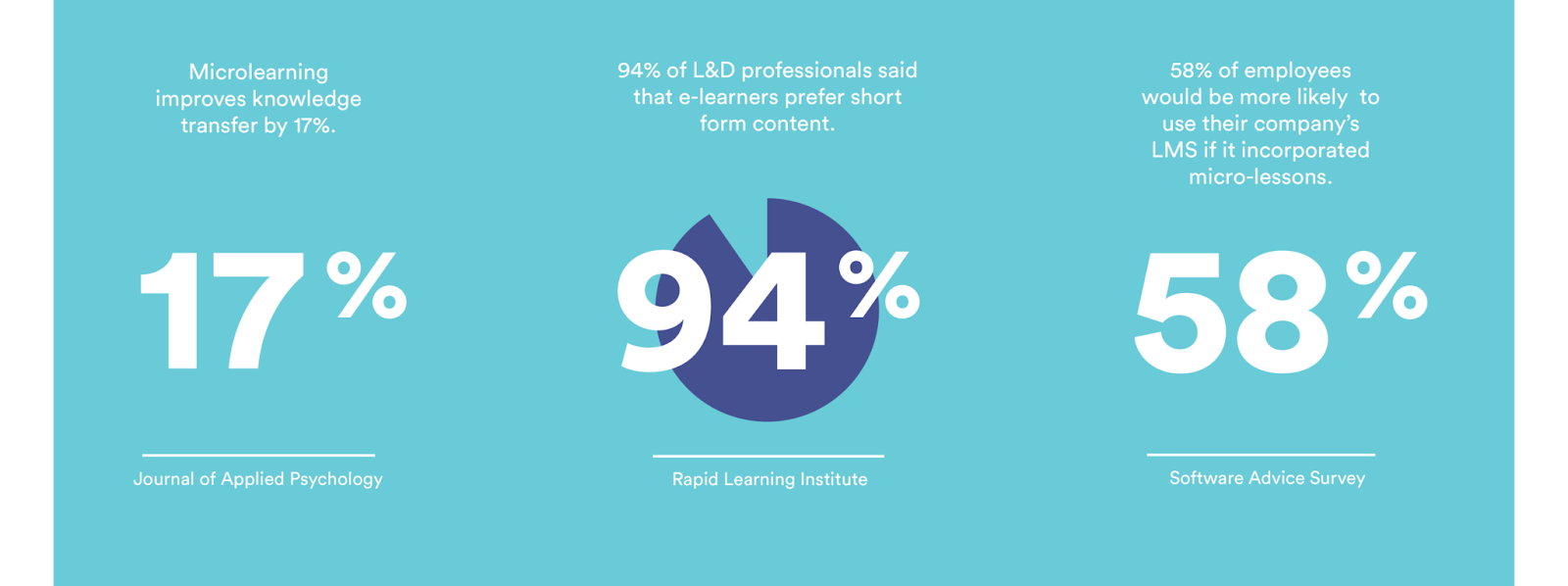
It improves learners’ engagement levels and helps them retain knowledge by 80%. You can design “micro-units” or modules of information that they can access and complete on the go in small bursts.
According to Gallup, 80% of employees who receive meaningful feedback are found to be more engaged in their work. Instant feedback is when a learner's action is met with a direct, real-time evaluation.
In a training initiative, an immediate response helps correct mistakes, solidify understanding of concepts, and build confidence. It also reinforces what has been learned before the information fades from memory.
Gone are the days of static, text-heavy learning modules. Initiatives for adults should incorporate text, images, audio, video, and interactive elements to create more engaging and memorable learning experiences.
The use of multimedia appeals to different learning styles and improves the brain's ability to process information through both visual and auditory channels.
Metacognition refers to thinking about thinking or reflecting on the process of learning itself. Metacognitive strategies are methods that improve the learning process of individuals. It allows them to become self-aware of their cognitive processes and how they best absorb and retain information.
This approach is highly valuable in employee learning and training because it helps people develop transferable skills. Reflecting on how they mastered a concept in one situation helps employees successfully apply that skill or knowledge to multiple work scenarios.
As the name suggests, spaced repetition is a learning technique that involves reviewing material at increasingly longer time intervals. This approach directly counters the fact that humans rapidly lose memory of newly acquired information over time unless they actively engage in reviewing it.

For employee learning, spaced repetition helps solidify knowledge into long-term memory. It prevents the negative effects of the forgetting curve and keeps the skillset sharp and readily accessible when needed on the job.
What is a better way of learning than actually doing the job? Experiential learning is exactly what you need to learn complex skills. Simply, it is a method of learning through first-hand experience, often by “doing” rather than just reading or listening.
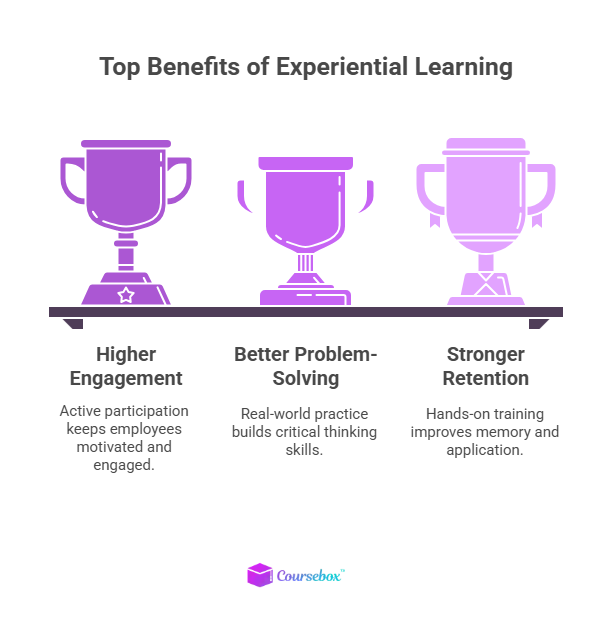
Experiential learning takes place through a cycle of practice and review that transforms experience into actionable knowledge for the real world. This approach can lead to retention rates of up to 90%.
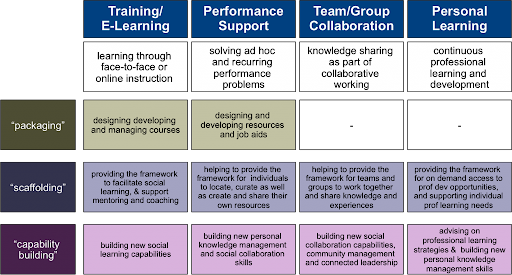
Scaffolding is an instructional strategy in which a more experienced professional provides temporary support to a novice or junior. The purpose is to help a learner acquire a new skill or master a complex task in a safe and supervised environment. Just like construction scaffolding, once the learner masters the skill, the expert can gradually remove their support.
Measuring the true impact of any training program requires both qualitative and quantitative data to assess the Return on Investment (ROI) accurately. This may include interviews, test scores, and different metrics.
Here are four methods to evaluate whether your instructional strategies are successful:
A learner’s engagement level is the biggest predictor of success and retention. To measure it, track quantitative metrics like completion rates, time spent on interactive modules, and participation frequency in live discussions or polls. High engagement indicates the strategy is relevant and well-designed.
Employee retention is a crucial long-term metric. Look at staff turnover rates in the months following comprehensive training, particularly for targeted teams. Successful instructional strategies reduce turnover by ensuring employees feel competent and valued. You can also track the retention of core knowledge via post-training quizzes.
The ultimate goal of any instructional strategy is to transfer skills. This means that learned knowledge must translate into observable changes in workplace behavior. You can gauge this by monitoring performance data and key business metrics (KPIs). For example, after sales training, track conversion rates and follow compliance training to monitor the reduction in errors.
Direct observation of employees using the new skills provides necessary qualitative validation of the training's success. Furthermore, collecting 360-degree feedback is also essential for assessing the impact on soft skills, such as leadership and communication.
Collect direct feedback from the participants on the relevance, clarity, and success of your instructional strategies. This can be done immediately after the session using quick satisfaction surveys (Smile Sheets) to gauge initial reaction.
Alternatively, conduct in-depth follow-up interviews weeks later. These methods will give you insights into which strategies led to the most significant breakthroughs and changes.
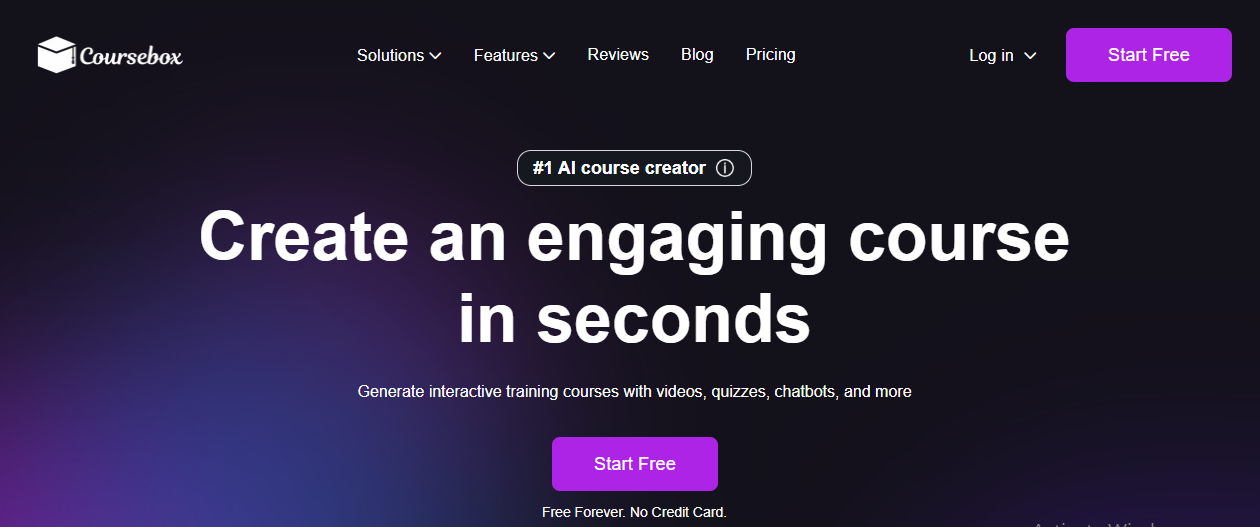
Instructional strategies are the foundation of your learning and development initiatives, which upskill your employees and drive business growth. However, it is essential to be intentional and choose strategies that align with your organizational goals and learners' needs.
The scenarios you design should encompass diverse experiences and learning levels. You must tailor content to respect their prior knowledge, align with their career trajectory, and acknowledge their varying learning styles to maximize the potential of every employee.
To integrate these digital strategies into your workflow, choose a platform such as Coursebox that helps you design and measure successfully. Its AI-powered features empower you to transform data into online courses, create multimedia assignments, and design interactive activities in seconds.
Sign up for a free trial today and transform adult learning!
The best tools are those that support flexibility, multimedia, and immediate feedback. For a seamless implementation of these techniques, consider a platform like Coursebox. It is designed to help instructional designers by automating content creation, facilitating interactive assignments, and providing the necessary analytics to measure the impact of their work.
Adult learning focuses on self-direction, experience, and relevance. Adults need to understand why they’re learning something and how it applies to real-life goals or work situations. In contrast, teaching younger students is often subject-centered and teacher-led, with learners depending more on external structure and motivation.
Online programs thrive on strategies that promote learners' engagement. Microlearning is well-suited for flexibility, while Immediate Feedback in quizzes and simulations helps sustain motivation. Furthermore, online learning also benefits greatly from collaborative learning activities and metacognitive strategies to maintain accountability and self-awareness.
Common challenges that educators face while teaching adults include overcoming resistance to new learning methods, managing diverse prior knowledge and skill gaps, and respecting their limited time. Adults also have high expectations for the practical application of training. Overcoming these challenges requires highly relevant content and flexible, experiential learning techniques.
